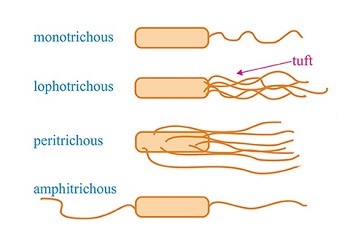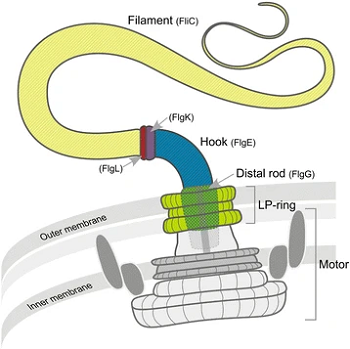Hanging Drop Method - Introduction, Principle, Procedure, Result, Limitation
Introduction to Hanging Drop Method
The hanging drop method is a simple method used to determine the motility of the test organism and is used in the identification process since most gram-negative bacteria are motile. It is a very quick method. In addition, the microbial cells' arrangement and shape can also be determined.
It has an advantage over the wet mount motility test as this method allows the study of viable microorganisms for a longer amount of time.
The culture method is another method that can be used to determine motility.
Motility in Hanging Drop Method
Motility is the ability of any microorganism to move from one place to another by especially the means of propeller-like flagella or by special fibrils (twitching motility) or gliding form of motility. These flagella are thread-like locomotor appendages that extend from the plasma membrane and cell wall.
Depending upon the genera and species of the organisms, an organism can possess single flagella named monotrichous or multiple flagella i.e. lophotrichous, peritrichous, amphitrichous.

Fig: Bacterial flagella configuration (Source: Wikipedia)
The presence of flagella is a chief characteristic of any organism as it is an important taxonomic tool. Although flagella are mostly present in bacilli, some species of cocci are also flagellated.

Fig: Bacterial flagella in gram-negative (Source: Wikipedia)
Principle of Hanging Drop Method
The hanging drop method involves observing the test organism in a drop suspended under a cover slip in a cavity slide (concave slide). The drop dries out very slowly as it lies within an enclosed glass chamber.
.jpg)
Fig: The hanging drop method (Source: Biolofy reader)
Procedure of Hanging Drop Method
The procedure of the Hanging Drop Method is as follows:
Take a sterile hanging drop slide and spread a little vaseline/petroleum jelly around the cavity of the slide
Take a clean cover slip and spread a little vaseline/petroleum jelly on four corners of the slide
With the side with vaseline looking upwards, place a drop of a fresh broth culture of the test organism on the center of the slide
Place the hanging drop slide with its cavity facing down so that the depression perfectly covers the drop of culture
Slightly press the slide to form a seal between the glass slide and hanging drop slide via vaseline/petroleum jelly
Lift the preparation and quickly turn it so that the drop of fresh broth is suspended inside the cavity of the hanging drop slide
Examine the drop under low magnification and reduced light
Switch to high power magnification and observe the presence/absence of motility
Result of Hanging Drop Method
The result of the Hanging Drop Method indicates motile organisms are seen moving long distances while non-motile organisms stay in a particular place.
Limitation of Hanging Drop Method
The limitation of the Hanging Drop Method are as follows:
If the inverted suspension touches the surface of the concave walls inside the hanging drop slide, the drop may no longer be suspended
As live microorganism is used, there is a risk of infection, contamination of laboratory staff, and even escape of pathogens from the laboratory